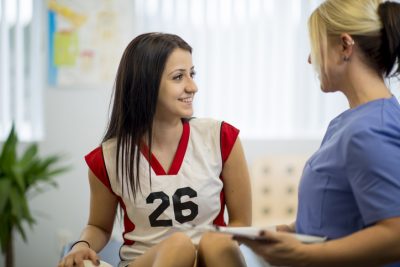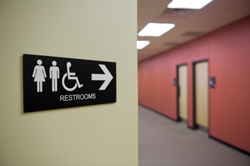My life changed dramatically in 5th grade. Throughout elementary school, I attended predominantly Black schools. In 5th grade, my family moved to a predominantly White neighborhood and I attended a small, predominantly White school. I remember the shock I experienced, coupled with curiosity, now that I was thrown into an environment with people of a different race who looked different than I did. Although this school provided me with an excellent education, socially navigating this new environment was very challenging.
My parents were very supportive, but sometimes found themselves stuck when I approached them with questions about racial differences. I had many inquiries such as “why do my classmates look different?” since they presented differently than I perceived they would due to how I was influenced by media. I also questioned how to respond to confusing and hurtful comments I received from others who were racially different from myself and asked, “What do I say back to people?” when I did not agree with statements made by others. Here are a few of the things I wish adults in my life could have done differently to prepare me to celebrate myself as a young Black girl while also navigating life in a world of people who were different from myself.
As Adults, We Have to Start with Ourselves
Recognize Racial Biases
Everyone has biases. Sometimes people feel guilty when they become aware of a bias they have. Simply having a bias is not harmful. The danger is when biases go unrecognized, they can perpetuate negative stereotypes and result in differential treatment of people who are different from ourselves. Take time to reflect on the biases you have and whether they influence your actions, resulting in differential treatment to others.
Abandon the Notion of Colorblindness
Many people take a “colorblind” approach when attempting to teach inclusiveness. Taking a blind approach means you are deciding to not see color or race. Doing so erases the impact that people experience as a result of racism and unjust treatment and further perpetuates stereotypes. Teaching that color does not matter also halts conversations about race and actually minimizes the beauty in differences.
Embrace Difficult Conversations
Whether we like it or not, our children are going to be exposed to ideas about race and stereotypes. It is embedded in our society such as on social media, with peers, and so on. By embracing difficult conversations in our homes, we can help to steer conversations and influence our children’s ideas about race.
Prepare Ahead of Time
Having these conversations are not always easy. Luckily, there are many resources available for parents. Some parents find it helpful to intentionally seek out books, toys, and television shows that highlight and celebrate differences to use as a launching pad. It can also be helpful to have standard replies to statements made by those we love that are hurtful. For example, saying “What you said might be hurtful to others” or “I am uncomfortable with that statement” models for children how they can navigate tough situations with others in the future. Saying these statements can be difficult, so having a set statement can be helpful.
How to Guide Kids
Support Curiosity
Children are naturally curious so looking for signs of curiosity can be helpful to determine if your child is noticing racial differences. By preschool, most children can recognize racial differences. Toddlers may point or reach to touch hair that is different from theirs. They may even comment on facial differences. As parents, it is important to not shut down or shy away when this happens. Instead, stay curious and try not to impose your own anxieties regarding talking about race. Doing so may send the signal that discussing differences is a taboo subject and that the child is doing something wrong by noticing differences.
Celebrate Similarities and Differences
Don’t deny differences. Embrace them! Encouraging children to notice and celebrate differences send the message that all backgrounds and experiences have value. Instead of shying away when a child makes a comment about the skin color of someone else, simply re-stating the difference with a positive association models that the difference is noticed and valuable. For example, “Yes, I see her beautiful brown skin!”
Check Understanding and Reactions
Children are more knowledgeable than they are often credited for. Asking questions to check their understanding of race and race-related events can open a conversation. With so many significant events highlighted in the media, checking in on understanding can also be helpful in case you need to provide more accurate information. Example questions to ask include “What are you hearing?” “What do you know about it?” and “How is this affecting you?”
You Are Not Alone
Our children do not live in a bubble and are far more aware of race than we may think. They are picking up information about race from the world, but also at home. As parents, we can encourage diversity in our children’s world so they can have continual practice noticing and appreciating differences in others. At the end of the day, we want our children to know that they are heard so it is important to embrace conversations when they start to show signs of curiosity rather than avoiding tough conversations.
There are plenty of resources and support available to parents who are looking to approach the conversation of race with children. Here are just a few:
Books for Parents About Race
- How to be an Antiracist by Ibram X. Kendi
- So You Want to Talk About Race by Ijeoma Oluo
- I’m Chocolate, You’re Vanilla: Raising Healthy Black and Biracial Children in a Race-Conscious World by Marguerite Wright
- Raising White Kids: Bringing Up Children in a Racially Unjust America by Jennifer Harvey
Books for Children About Race
- We’re Different, We’re the Same (Sesame Street) by Bobbi Kates and Joe Mathieu
- I’ll Walk with You by Carol Lynn Pearson and Jane Sanders
- Teach Your Dragon About Diversity: Train Your Dragon to Respect Diversity. A Cute Children Story to Teach Kids About Diversity and Differences by Steve Herman
- Not my Idea: A Book About Whiteness by Anastasia Higginbotham






Comments